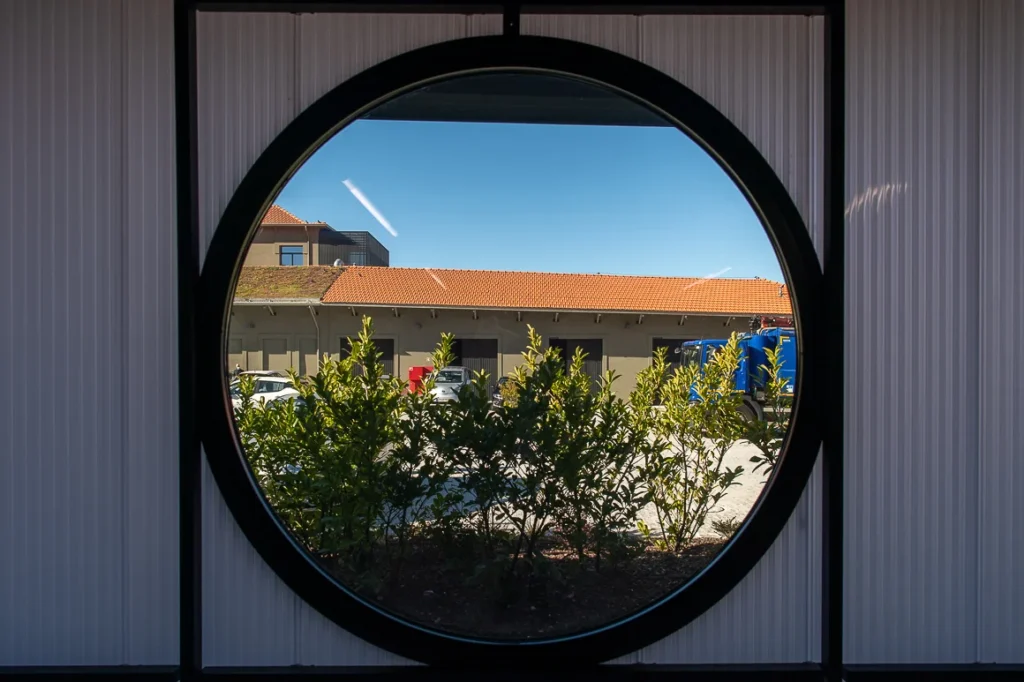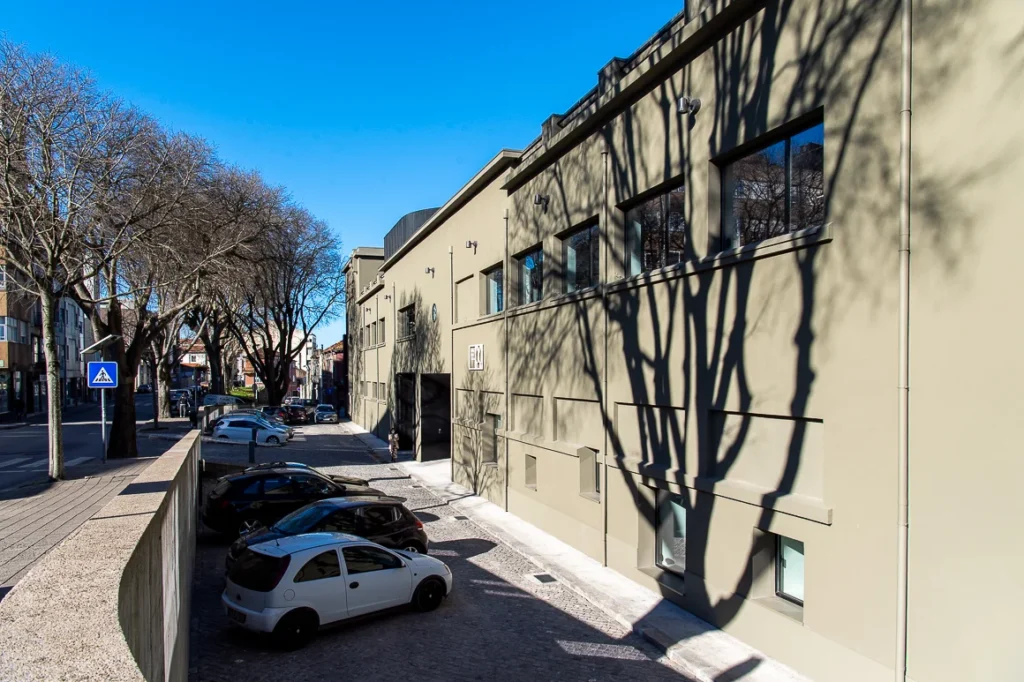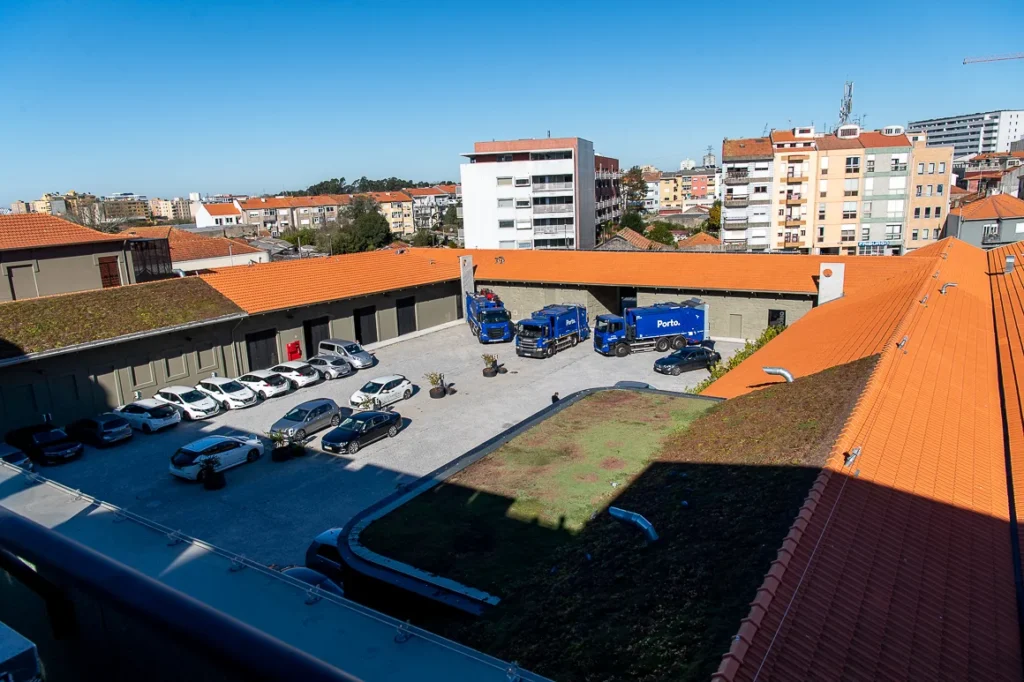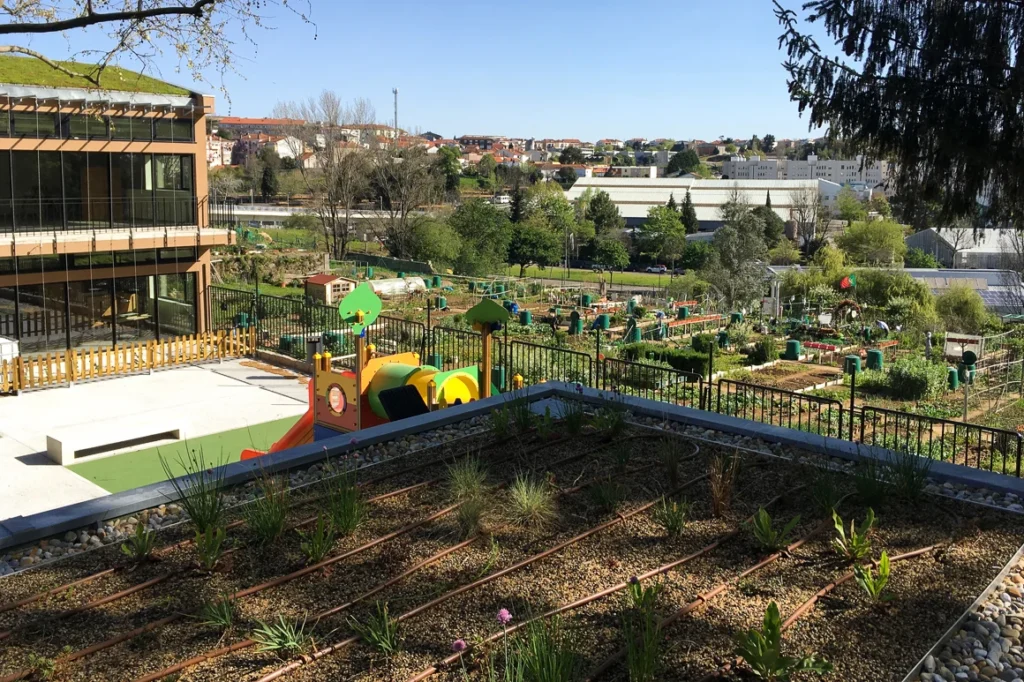Located on Rua de S. Dinis, the building was home to the municipal slaughterhouse until 1910, and during the 20th century it served a variety of functions and housed services such as the Municipal Directorate of Civil Protection, Environment and Urban Services, and even the municipal kennel, until it was requalified.
Visibly deteriorated and with various construction pathologies resulting from several years of use, the building has undergone requalification work so that in 2021 it could accommodate the headquarters of two municipal companies, GO Porto (Gestão e Obras do Porto) and Porto Ambiente.
The building has several improvements in terms of energy efficiency and green roofs, having obtained LEED (Leadership in Energy and Environmental Design) certification for sustainable construction.
The roofs have an extensive sloping roof and a flat roof, which contribute to temperature control and acoustic comfort. In addition, the roof has photovoltaic panels for producing renewable energy in self-consumption mode.
The roofs are irrigated from a reused water network, making the whole process more sustainable. The combination of all the improvements has made it possible to save energy, water for irrigation and water for sanitary equipment, since grey water is incorporated for flushing toilets.




